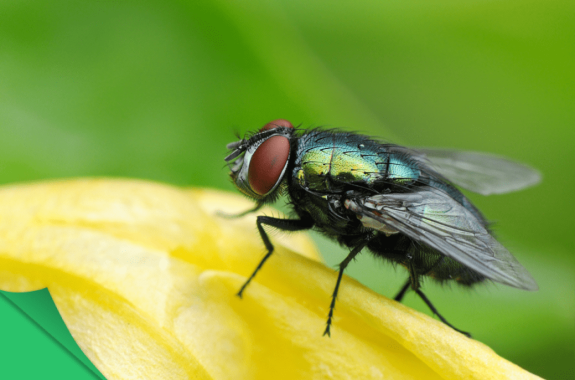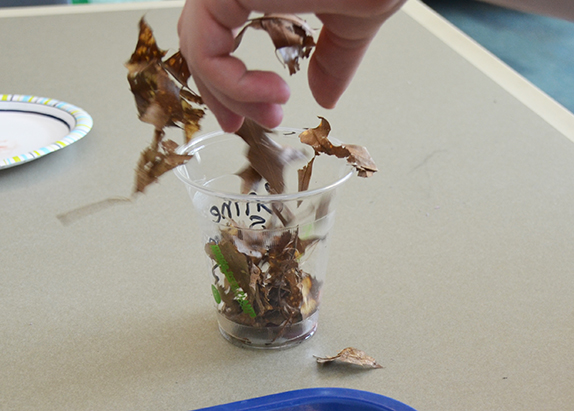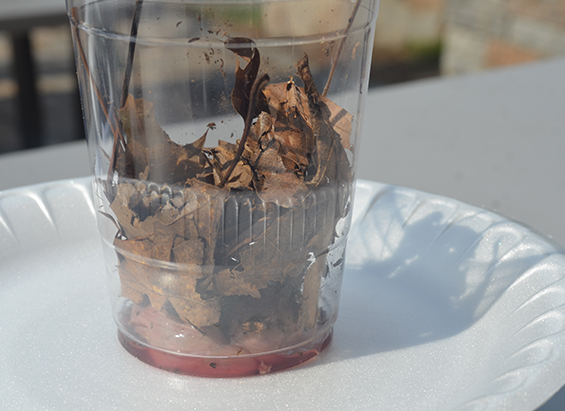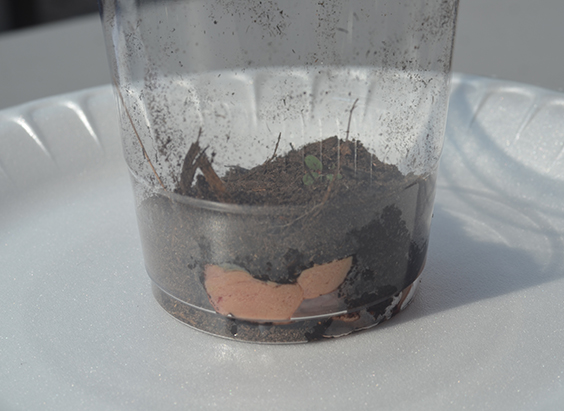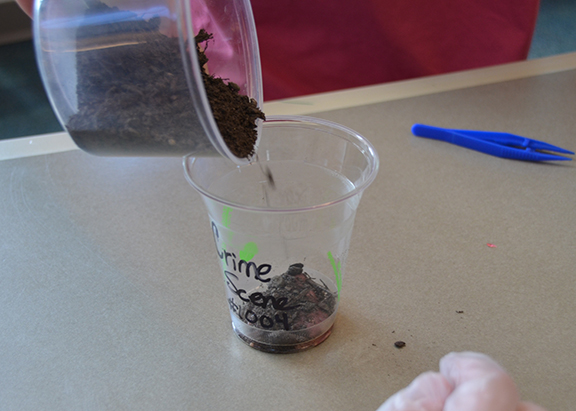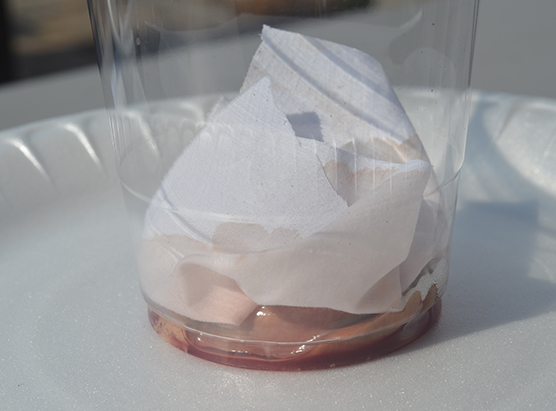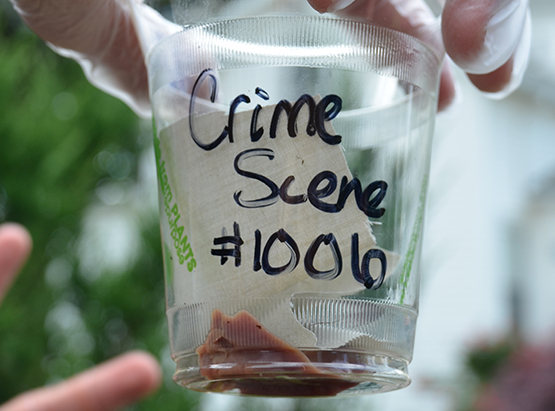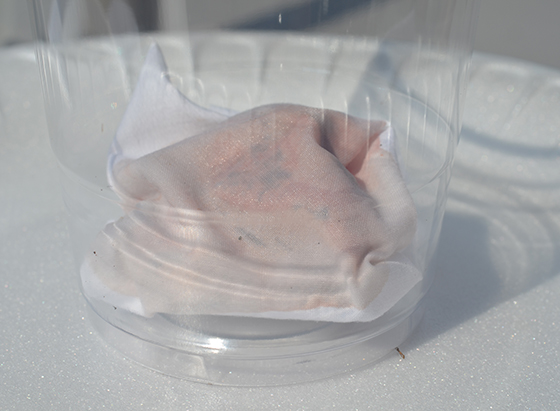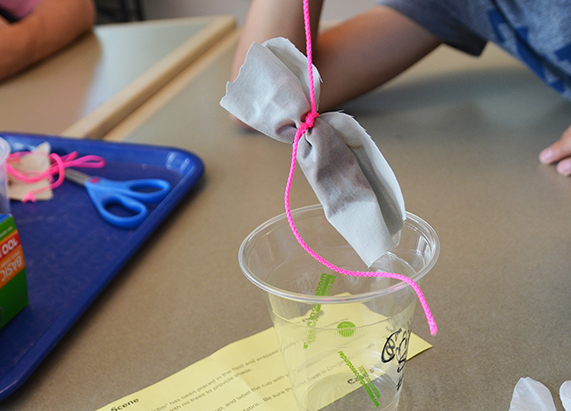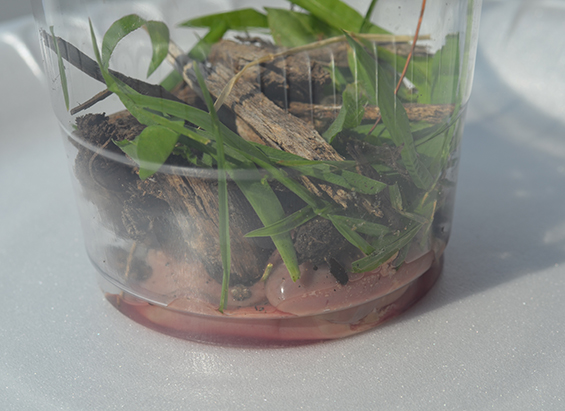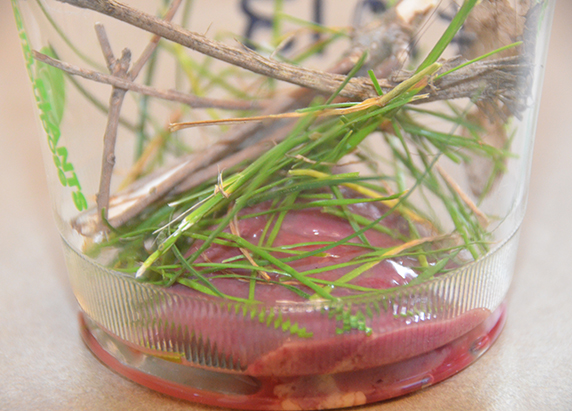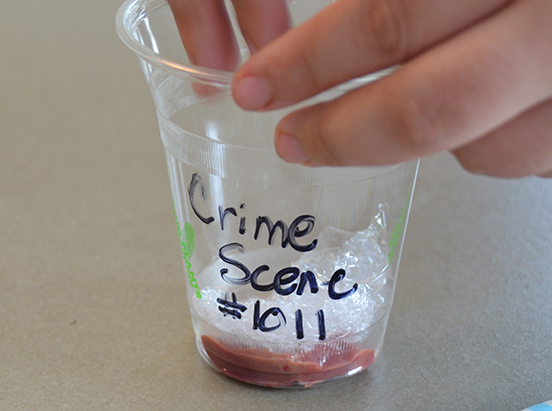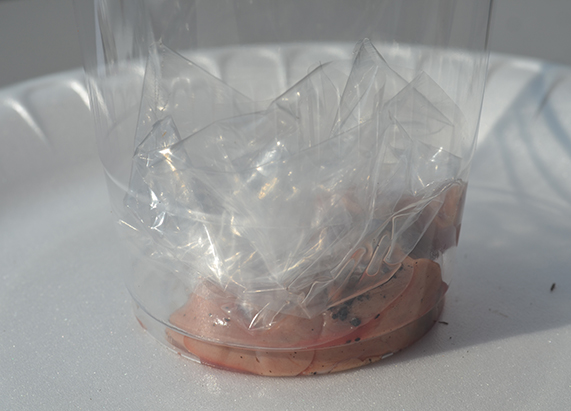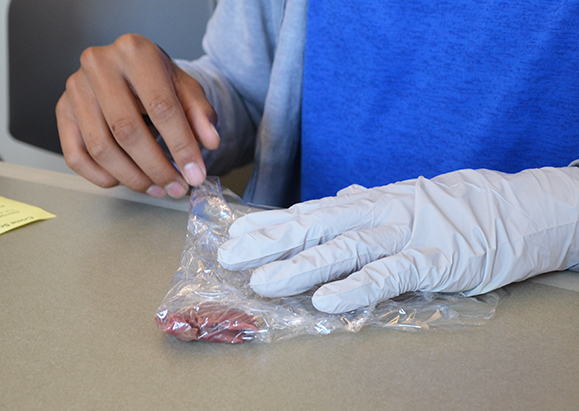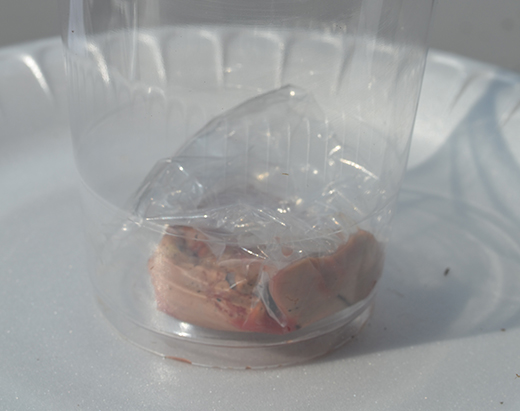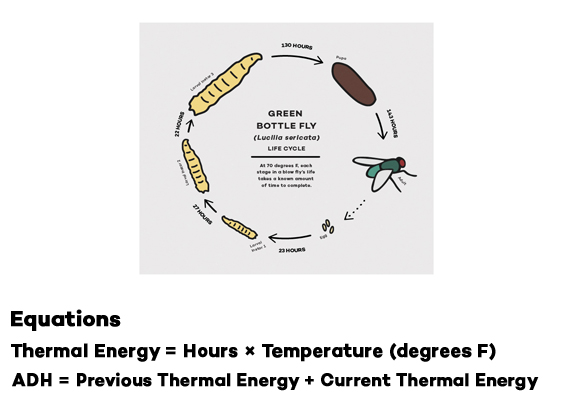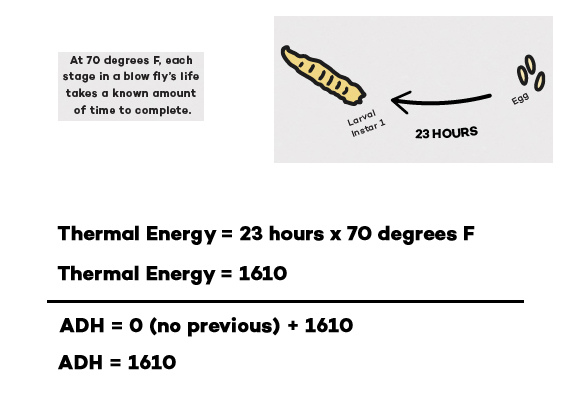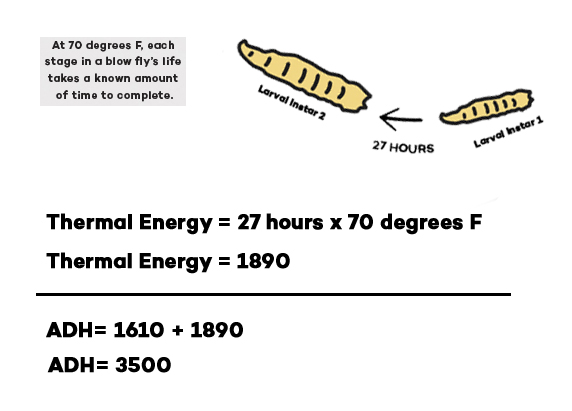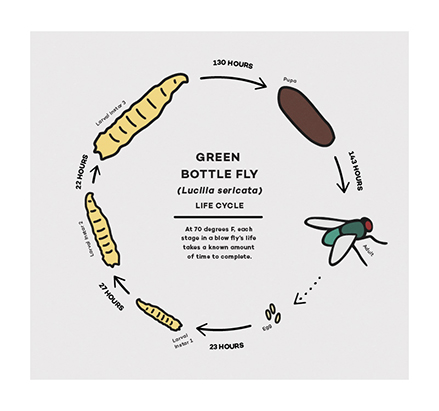Grade Level
6-12
minutes
Multi-day
subject
Life Science
stem practices
Engaging in Argument from Evidence
Activity Type:
forensics, hands-on activity, forensic entomology, insect development
WARNING Graphic Content: The videos and images below contain graphic documentation of real life, rotting human and animal corpses that may be disturbing to a younger audience.
A forensic scientist enters a crime scene and sees some flies, maggots, and a few beetles on and around a dead body. She immediately begins collecting them. Why? Because these insects can help investigators solve crimes!
 The type and ages of insects found at a crime scene can help investigators determine how long a body has been lying there, for instance, and if the victim had taken any drugs, medications, or poison before death.
The type and ages of insects found at a crime scene can help investigators determine how long a body has been lying there, for instance, and if the victim had taken any drugs, medications, or poison before death.
Our understanding of the clues that insects can provide about a crime scene comes from research done at facilities called body farms. At these facilities, forensic scientists study how bodies decompose, and forensic entomologists study the insects that contribute to that decomposition.
In this activity, you will create your own mini-body farm to attract insects to a “corpse” (in this case, a piece of meat). Over the course of a week, you will observe the number and types of insects that arrive at your corpse. You’ll use that data to explore how crime scene conditions affect the decomposition of a corpse.
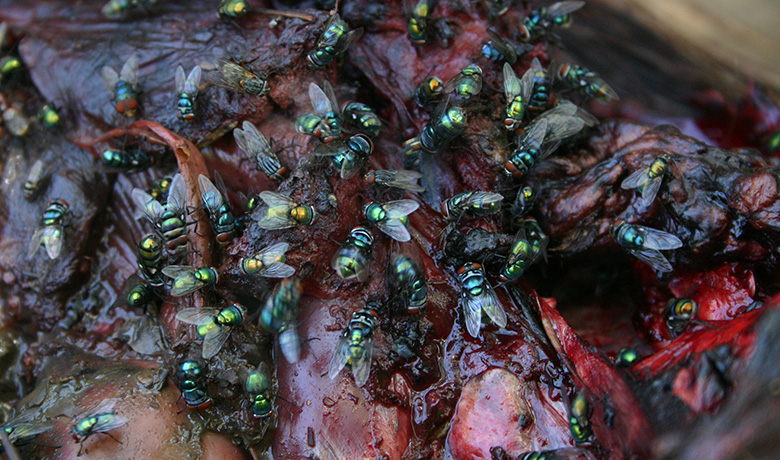
How do you use insects to solve crimes?
Anne Perez is a forensic entomologist and a lecturer at Ohio University, and she has intimate experience studying what insects can tell us about a dead body. In the following interview with Science Friday, Perez describes how forensic entomologists use insects to help them solve crimes. Listen to the audio clip below.
What does Perez’s job entail?
- What kinds of insects typically show up at a crime scene?
- How do the arrival and life cycle of insects help forensic scientists understand a crime scene?
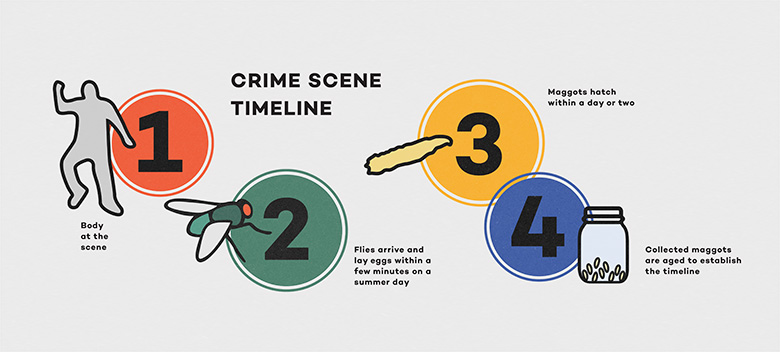
What is a body farm?
Body farms are research facilities where scientists study the decomposition of human remains in different types of settings. There are about a half-dozen in the United States and a few in Australia, with more planned in other countries.
One challenge to setting up a body farm is finding secluded fields away from densely populated areas so that the bodies won’t be disturbed. Another challenge is where to obtain corpses. While most body farms rely on human remains that have been legally donated, many use pigs because of their similarity in size and composition to humans. Anne Perez discusses body farms with Science Friday in the interview below.
This video shows the kind of research that can be done at Texas State University’s Forensic Anthropology Research Facility, a body farm located in San Marcos, Texas. You won’t be studying vultures like the forensic science students in this video do, but you will be inspecting insects!
- Based on the information in the interview with Anne Perez and in the video above, why do you think body farms are vital to forensic entomology?
If you want to learn more about Texas State’s body farm, check out its website, and watch this video.
Body Farm Insects
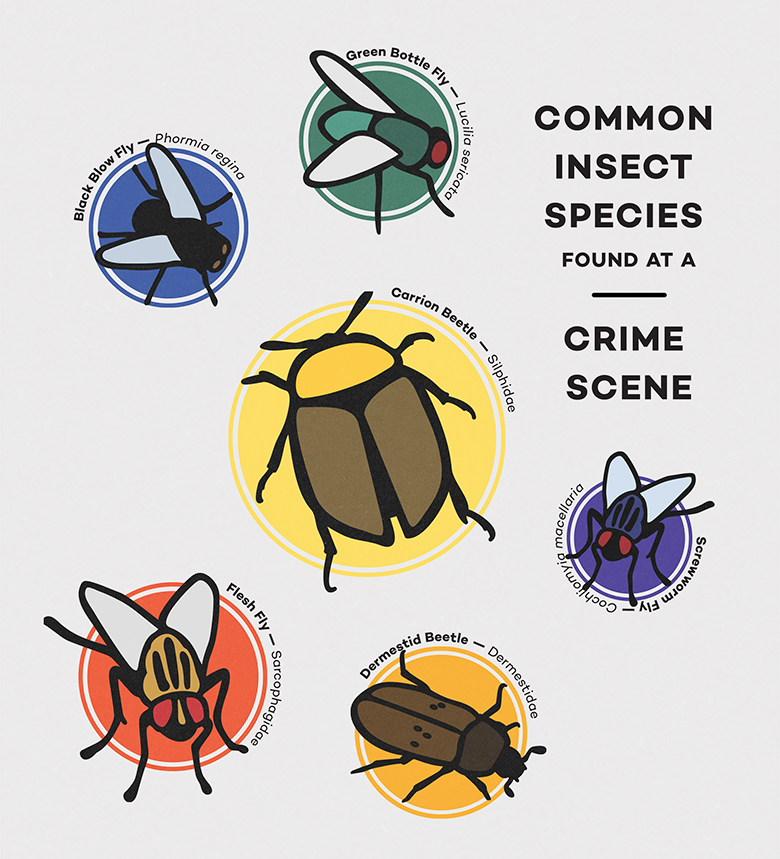
Insects, and especially flies, are attracted to the scent given off by a decomposing body soon after death. The most common insects you’ll find at a body farm are blow flies and flesh flies, either as “maggots” (their larval stage) or as adults, although you might also encounter beetles and other types of insects, too. Of the blow flies, one common visitor is the green bottle fly, an iridescent insect that you’ve perhaps noticed buzzing around trash cans.
What conditions affect the kinds of insects you see at a crime scene?
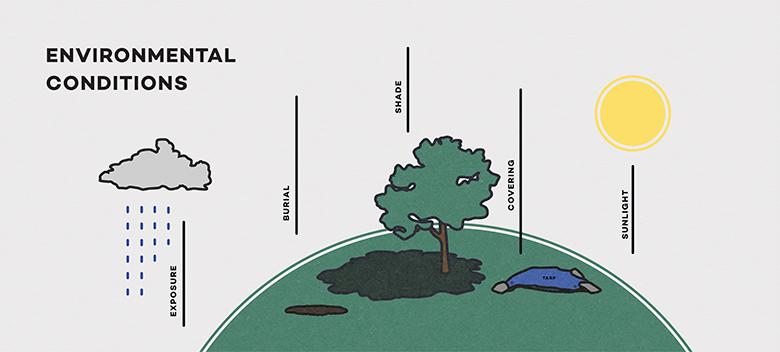
You will create a mini-body farm and investigate the types and ages of insects that are attracted to different simulated crime scenes. Pieces of meat or liver will serve as stand-ins for corpses. As Anne Perez mentioned, the microclimate of a crime scene affects insect turnout. Depending on the environmental conditions of the area, insects might have a difficult time finding the “corpses” in your body farm.
Before you start the experiment, you should decide where your body farm will be located. Depending on the crime scenes you study, you will need to choose both a sunny area and a shady area.
Tip: Conduct this experiment when insects are most active—that is, when temperatures are above 60°F during the daytime, and there’s little to no rain.
Materials Per Crime Scene Scenario
|
|
*Whether or not you need this item depends on the crime scene scenario(s) you choose.
Safety Notes
Raw meat can pose a health risk. Be sure to wash your hands before and after the experiment, and wear latex or nitrile gloves when assembling the body farm and inspecting the cups.
Assemble the Control Cups
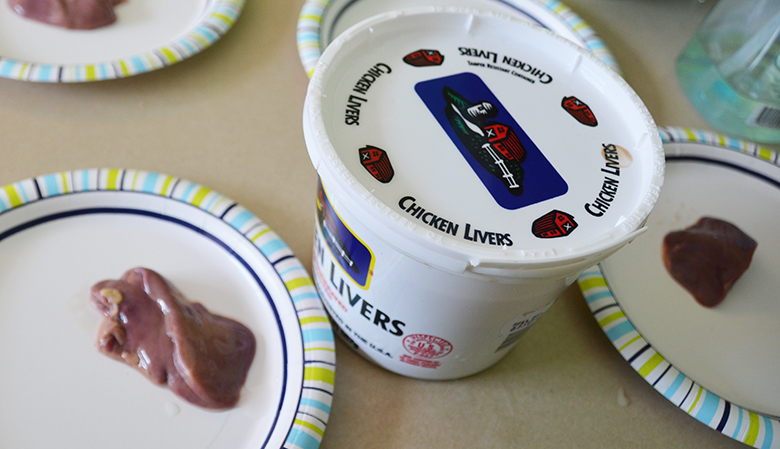
If you choose to do just a few of the crime scene scenarios, use one control cup for each crime scene. But if you are doing most or all 14 crime scenes, you can use one control cup per several crime scenes. (Note that there are two types of crime scene locations—sunny and shady—so you will need to put at least a couple control cups in each location.)
- Use a Sharpie to label the outside of a plastic cup with your initials and the word “Control.”
- Using forceps or plastic utensils, place one piece of meat/liver in the plastic cup. Do not add anything else to the cup.
Assemble the Crime Scene Cups
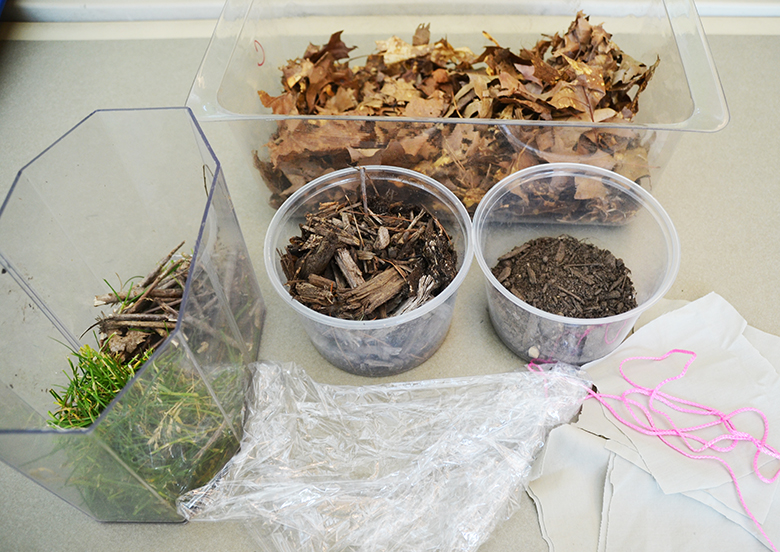
- Either individually or in pairs, select at least one crime scene from the list below to recreate.
- Use a Sharpie to label the outside of a plastic cup with your initials and crime scene case number.
- Record the crime scene conditions (e.g., sunny, shady, crushed leaves, etc.) on your Body Farm Data & Observation Sheet.
- Follow the case instructions to recreate the crime scene in your cup. When you place your cup outside, don’t forget to include the control.
- For each crime scene you recreate, predict the differences you expect to see between your control and crime scene cups. Do you think there will be more insects in one type of cup, or more variety of insects? What other predictions can you make? Record your predictions on your Body Farm Data & Observation Sheet.
Setting Up the Mini-Body Farm
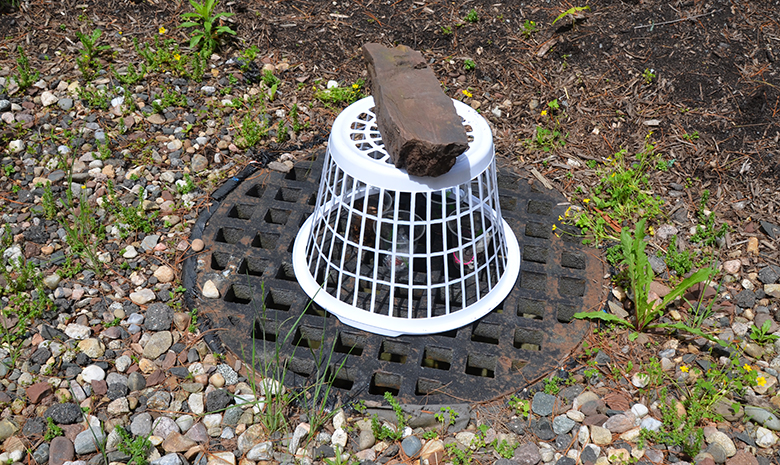
- If you haven’t already done so, select a spot (or spots) outdoors where people won’t bother the cups.
- Place the “sunny” cups together under an upside-down laundry basket to protect the cups from scavengers. If needed, place heavy rocks on top.
- Repeat with the “shady” cups.
- Leave your cups outside for the next 5–7 days, returning each day to make observations.
Fly Life Cycles
The green bottle fly is found in most tropical and temperate regions around the world, and it’s often one of the first insects to arrive at a corpse. Scientists have studied the life cycle of green bottle flies and have a good understanding of how environmental variables like temperature affect its rate of development.
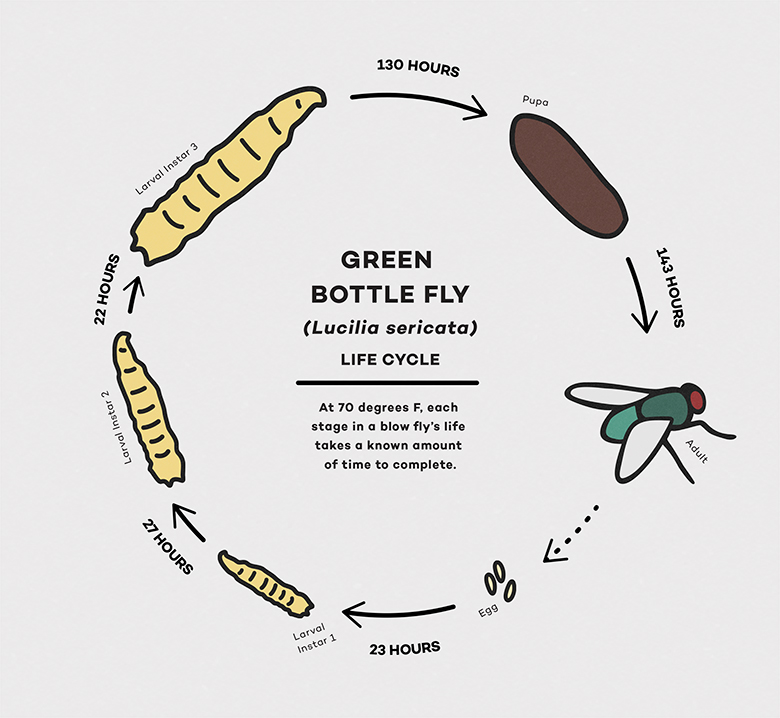
Discussion Questions
- What patterns do you notice in the life cycle diagram?
- What effect do you think temperature has on insect development?
- What other animals have a similar pattern of development or undergo a similar metamorphosis?
Fly development is similar to that of a butterfly. The egg stage is followed by the larval stage, then the pupa, and finally the adult emerges. Scientists can determine how temperature affects fly development by raising maggots in incubators in the lab, where they can control the temperature. Take a look at the Number of Days of Development data below. Notice how long it takes a maggot to develop into an adult in cool, warm, and hot conditions.
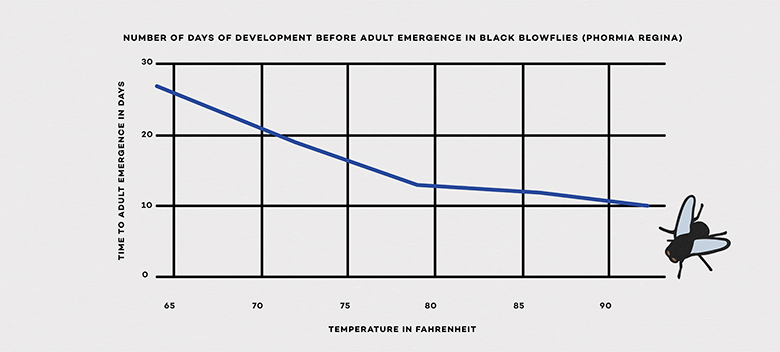
Discussion Questions
- What kind of data is included in the graph?
- Based on the graph, how does temperature affect the black blow fly life cycle?
- How does the development data here relate to the life cycle diagram of the green bottle fly that you already looked at?
- How do you think the location of the crime scenes (e.g., sunny, shady) in your body farm will affect the rate of maggot development?”
- How could knowing how temperature affects the black blow fly life cycle be useful in solving a crime?
Check out the status of your body farm specimens.
Days 1+
Warning: As the days go by, the body farm will smell like rotting trash, so you might want to breathe through your mouth instead of your nose. Sometimes you have to sacrifice a little for science!
It is okay to gently move any plant material or soil using forceps or plastic utensils to check the surface of the meat, and then return the covering. If you wrapped the meat in plastic or fabric, leave the meat wrapped and only observe insects outside the wrapping.
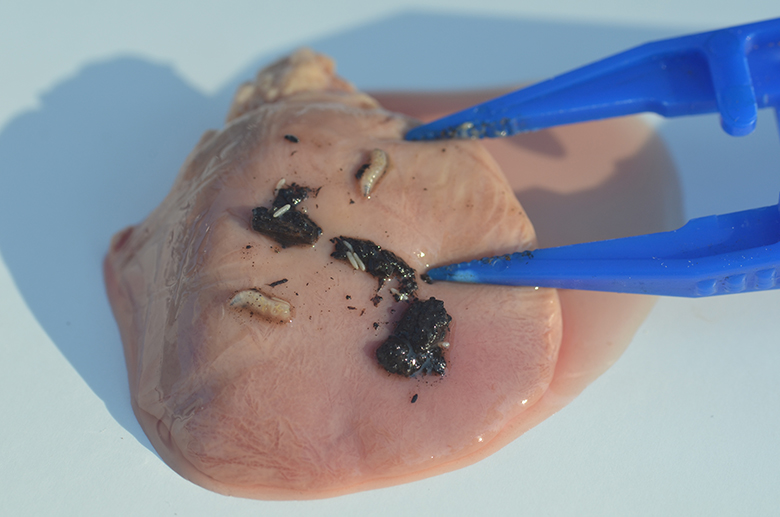
- Return to the body farm each day for up to a week to record observations. Day 1 is one day after you placed the cups outside. Day 2 is two days after, and so on. You might have to briefly lift up the laundry baskets in order to see better.
- On your Body Farm Data & Observation Sheet, record the type and number of any insects present at each crime scene and at the control cups. Use the Common Insect Species at a Crime Scene if you need help with identification.
- Once you’re done observing, return the cups to their location under the laundry baskets in the body farm.
- On the final day of observation, use forceps or plastic utensils to unwrap any meat wrapped in fabric or cloth. Check to see if the unwrapped meat has insects on it. Be sure to wear latex or nitrile gloves.
Disposal: Cups, meat, and all wrappings should be placed in an outdoor trash receptacle secured from scavengers.
Analyzing Your Body Farm
Once all of the control and crime scene conditions have been examined, look for patterns.
- Compare your observations of the crime scene(s) and control cup(s). Look at the number and types of insects you found each day.
- If you recreated more than one crime scene, compare your observations of different crime scene cups. Look at the number and types of insects you found each day.
- Make a bar graph of the number of insects you found on the meat in your control and crime scene cups on the last day. You can graph one crime scene cup and its control, or multiple.
Analysis Questions
To answer some of these questions, investigators might have to share data.
- How did the number and type of insects found in the control and crime scene cups vary over time?
- Was your prediction supported by the data you collected? Explain.
- After comparing all the crime scene and control cups, which conditions attracted more insects? Which conditions attracted fewer?
- Did the maggots in some cups appear to grow faster than maggots in other cups? If so, why do you think that is?
- What patterns do you notice about the different crime scene conditions studied?
- How could the patterns you observed be useful in a real crime scene analysis?
Did your results match those of the experts?
Warning Graphic Content
The videos below contain images of rotting human corpses that may be disturbing to a younger audience.
Extension: How to Calculate the Time of Death
Maggots found at a crime scene can help forensic entomologists determine how long a corpse was there. To understand how, let’s take another look at the Green Bottle Fly Life Cycle to see how long it takes a larva to develop at 70°F into an adult.

Now let’s revisit the black blow fly graph. The graph shows that it takes longer for a black blow fly to develop into an adult when temperatures are cooler than when they’re warmer.

Why does temperature matter? First, insects can only develop if the temperature is above a certain threshold, which varies from species to species. And then to grow from one stage in its life cycle to the next, an insect requires a certain amount of thermal energy, or heat.
Calculating the thermal energy for a given stage of growth entails multiplying the temperature by the time the insect was exposed to that temperature. Because the temperature outside is always changing during the day, scientists use the average daily temperature for this calculation.
The total amount of thermal energy that an insect requires to reach a given stage of its life cycle is referred to as the accumulated degree hour (ADH). Scientists have determined ADH values for many species of fly that can be found on corpses.
If forensic entomologists can determine the life stage of maggots on a corpse at a crime scene, they can estimate how long the body was there. But it’s sometimes hard to figure out life stage just by looking at maggots. Instead, scientists collect the larvae and transfer them to temperature-controlled incubators in the lab. There, they let the maggots develop into adults.
Based on the time it takes the maggots to mature in the lab at a controlled temperature, the scientists can determine how much thermal energy the insects used in the lab. By subtracting that value from the total ADH required for the species’ entire life cycle, the scientists can determine the thermal energy the maggots must have accumulated at the crime scene. Armed with that information, along with data on the average daily temperatures at the crime scene, the scientists can calculate how long it took for the maggots to develop on the corpse, and hence determine the approximate time of death of the body.
Using your local weather conditions, you can estimate the age of fly larvae found in your body farm.
How to do ADH Calculations
Let’s practice by starting with ADH calculations for the green bottle fly using the Accumulated Degree Hour Data Sheet and the sample calculations below.
Calculate the Age of Your Body Farm Maggots
Before beginning, look up the average daily temperatures at your location during the week of your investigation here.
- Pick one control cup in which you saw eggs and maggots, and record the date and average temperature on the Accumulated Degree Hour Data Sheet for each day the eggs or maggots were there.
- Calculate the Thermal Energy and ADH for each day the eggs or maggots were present.
- Compare the ADH you calculated to the values of ADH for the green bottle fly,* and determine what stage of development your maggots should have been in on the last day of the experiment.
*Although you may have a different local species of fly at your body farm, this exercise does provide good practice for determining life stage.
Analysis Questions
- Based on your calculations, in what stage of development should the maggots have been in on the last day of the experiment?
- How precise do you think your calculations are? Why?
- Does your calculation of the total ADH match the physical appearance of your maggots on the last day? For example, if your calculation corresponds to the ADH required to reach the 2nd instar, did you observe medium-size maggots?
- What factors could have influenced when the eggs were laid in the cup?
Related Resources
- Entomology in Action lesson, where students can further explore ADH and fly lifecycles.
- San Marcos Body Ranch Used For Forensics Research- CBS Austin, TX
Standards
- Science and Engineering Practices: Analyzing and Interpreting Data, Using Mathematics and Computational Thinking
- Crosscutting Concept: Patterns
- Disciplinary Core Idea; LS1.B: Growth and Development of Organisms
Illustrations in this resource were created by Ari Tiziani for Science Friday.
Educator's Toolbox
Meet the Writer
About Jennifer O’Brien
@Solarium1101Jennifer O’Brien is a teacher and the Global Studies Program Director at the Watkinson School in Hartford, Connecticut, where she has taught science since 1998. She’s a proponent of labs, field trips, and hands-on learning in lieu of standard lectures, and encourages her students to make connections between science and matters of social and environmental justice whenever possible.
